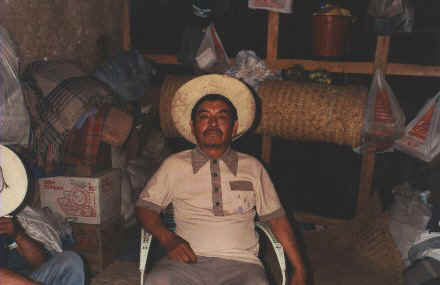 Migrant cane cutter from Guerrero, Los Limones
Migrant cane cutter from Guerrero, Los Limones Migrant cane cutter from Guerrero, Los Limones
Migrant cane cutter from Guerrero, Los Limones
There is a considerable degree of social differentiation amongst the cane growers of the Los Reyes valley and surrounding areas. Ejidatarios control different amounts of land within the ejidos, and more importantly, sometimes have additional private land on which they can sow other crops, including avocados. Growers may also have other sources of livelihood, and some rent out their cane land simply because their other affairs demand the whole of their time. There are, however, also relatively poor cane growers, and people whose ability to farm in the 1990s rested on a long previous career of international migration. Some cane land is also held by widows, who may not have resident sons to cultivate it. At the other end of the spectrum are large private cane growers, who may also own cattle, trucks and machinery or have investments in other sectors of the economy, not necessarily in the local region.
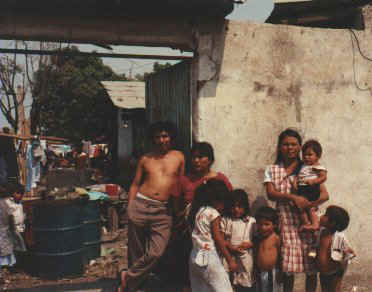 Outside the cane cutters' compound, Los Limones
Outside the cane cutters' compound, Los Limones
The ejidatarios are, however, clearly better off than members of landless families who do not have work in the mill and must depend on day-labourer jobs in agriculture, possibly supplemented by seasonal migration to the United States. Some of the people who maintain homes in communities like Santa Clara work exclusively in the United States, but the families of the upper barrio of the town are largely maintaining themselves from wage labour in local agriculture, and were active in the UCEZ struggle to create new subsistence plots on land occupied by cattle ranchers from neighbouring Tocumbo (a community whose elite have become famous in the popsicle business nationally). These local rural proletarians tended to support the PRD, whereas the ejidatarios largely remained loyal to the PRI, despite their dissatisfaction with government policy towards the sugar industry. Power therefore remained with the bosses of the official unions, and the cane cutters suffered the additional indignity in 1991 of seeing the payments in kind that were included as part of their wage in their contracts dispensed as electoral largess by the leader of the CNC union.
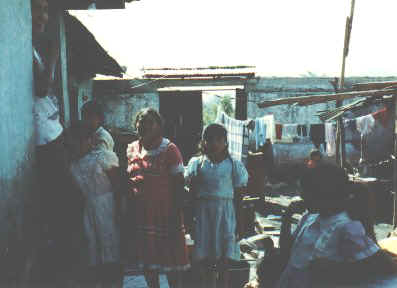 Inside the compound
Inside the compound
On the bottom rung of the social ladder are the migrant workers who come to Los Reyes from more distant regions. In the 1990-1991 zafra, the community of Los Limones was home to a group of Nahuatl-speaking Indians from the Río Balsas region of Guerrero state to the South. The migrants lived in a compound which offered little in the way of comforts, and did not feel particularly at ease in a ranchero cultural environment in which Indians are viewed with suspicion and a degree of contempt, despite the fact that local Purépecha Indians move freely about Los Reyes town and run the local street market. For the younger members of this group, the fact that they were the first generation of people from their community to speak Spanish fluently was the main hope for a brighter future, though not within Mexico, but as undocumented migrants to the United States.
Video Clips of Cane Cutters, Santa Clara Mill (Clip 2) - click on Quicktime logos to play![]()
Carr![]() ying cane to the lorry (Clip 1)
ying cane to the lorry (Clip 1)
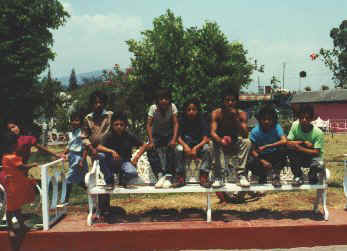
The cane cutters' children, in the village plaza
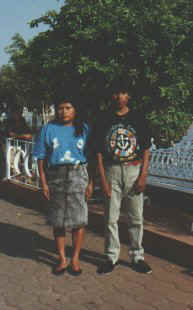 A young couple from Guerrero
A young couple from Guerrero